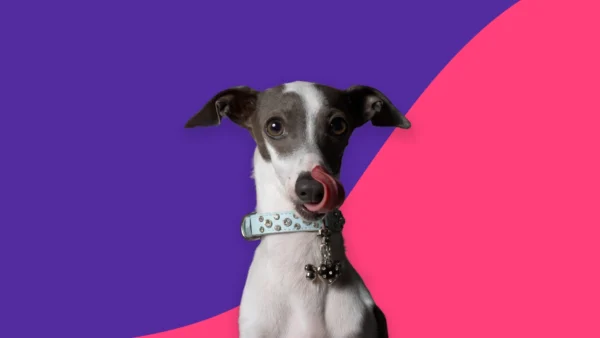Key takeaways
Diazepam is used to treat seizures, anxiety, and urethral constriction in dogs. Veterinarians may also use it as a pre-anesthetic sedative before veterinary procedures.
The standard diazepam dosage for dogs is 0.5–2 mg/kg as needed.
The most common side effects of diazepam in dogs are sedation, loss of coordination, agitation, increased appetite, and aggression.
Do not give diazepam to dogs if the dog is allergic to diazepam.
Diazepam is a generic drug widely known by its brand-name version, Valium. Veterinarians use it in dogs to treat seizures, anxiety, and difficulty peeing due to tightening or obstruction of the urethra. They may also use it as a sedative before veterinary procedures that require anesthesia. Diazepam is a fast-acting sedative that belongs to the benzodiazepine family. Because of its potency and other potential problems, veterinarians typically only use it as needed.
RELATED: Save up to 80% on diazepam
What is diazepam used for in dogs?
Veterinarians use diazepam to treat active seizures, extreme situational anxiety, urethral constriction, and pre-anesthetic sedation.
Seizures
Diazepam is the most common medication used to quiet seizures in dogs, particularly long-lasting seizures called status epilepticus. Diazepam works like a tranquilizer by slowing down nerves. In a veterinary clinic or animal hospital, veterinarians usually give intravenous injections of diazepam and other drugs called anticonvulsants like phenobarbital or levetiracetam. In dogs that regularly have seizures, owners may be sent home with a rectal gel such as Diastat, intranasal spray, or the injection solution, along with a catheter for rectal dosing or an adapter for intranasal dosing during an active seizure.
Anxiety
Diazepam is a fast-acting anxiolytic (anti-anxiety medication), but because of side effects and other problems, it’s not used as a daily, long-term treatment. Instead, pet owners will give the dog diazepam when it’s necessary to calm the dog before or during stressful situations such as thunderstorms or being left alone. Veterinarians may also prescribe it for behavior problems related to anxiety, such as aggression or compulsive behaviors.
Preanesthetic sedation
To perform surgery or other veterinary procedures, a veterinary professional may give a dog a dose of diazepam or other sedative before administering anesthesia. Diazepam makes the dog very sleepy but doesn’t put the dog to sleep or numb pain. Instead, sedation makes it easier to induce anesthesia. Diazepam isn’t always the veterinarian’s first choice. The veterinarian has other sedation choices, including opioids. However, the great benefit of drugs like diazepam is that they don’t slow down breathing or the heart the way opioids or other sedatives might.
Urethral obstruction
Some dogs have trouble peeing because the urethra is blocked or partly blocked. The urethra is a long tube that passes urine from the bladder out of the body. It has two muscle linings. The inside lining is smooth muscle, like the muscle in your intestines. The outside layer is skeletal muscle, like the muscle in your arms. In dogs with urethral obstruction, diazepam is used as a muscle relaxant to loosen the skeletal muscles in the outer layer of the urethra. Veterinarians prescribe diazepam for urethral obstruction in continuous daily doses given up to three times per day. Doses are spread throughout the day during the times the dog normally urinates.
Other conditions
Veterinarians may also use diazepam for metronidazole poisoning—metronidazole is an antibiotic—or as an appetite stimulant. Diazepam is the drug of choice for metronidazole toxicity, but it’s not an ideal drug for increasing a dog’s appetite because of its adverse effects.
Is diazepam safe for dogs?
As in humans, diazepam is a risky drug. It is a federally controlled substance because of the risk of physical dependence, tolerance, withdrawal, abuse, and overdose.
Diazepam is never given to dogs that have had an allergic reaction to diazepam.
Diazepam is used with caution in dogs with liver or kidney disease or who are pregnant, breastfeeding, geriatric, debilitated, comatose, in shock, or aren’t breathing well.
Veterinarians are also cautious about using diazepam in aggressive dogs. There is a small possibility that a dog will react to diazepam by becoming more aggressive.
Side effects of diazepam in dogs
The most common side effects of diazepam in dogs are:
- Sleepiness
- Clumsiness (loss of coordination)
- Increased appetite
- Drooling
- Agitation
- Aggression
There are no pet formulations of diazepam, so pet owners need to rely either on human formulations of the drug or those made by a compounding pharmacy. Possible formulations pet parents might use include tablets, rectal gel, intranasal spray, and injection solution (for rectal or intranasal use).
The most serious side effects of diazepam in dogs include:
- Extreme lethargy
- Low blood pressure
- Rarely, a contradictory response of severe excitement
If you notice these problems, contact the prescribing veterinarian right away.
Interactions of diazepam with other pet meds
Diazepam has numerous drug interactions, so tell the veterinarian about all the drugs, supplements, and herbal products that you give the dog. Make sure to tell the veterinarian about the following:
- Any drugs that make the dog sleepy (central nervous system depressants), such as opioids
- Anxiety treatments, such as amitriptyline
- Epilepsy drugs, such as phenobarbital or phenytoin
- Stomach acid medications, such as omeprazole or cimetidine
- The antibiotic erythromycin
- Drugs that treat fungal infections, such as ketoconazole or itraconazole
- The heart drugs digoxin, quinidine, or amiodarone
- Antacids
Diazepam dosage for dogs
For at-home dosing, the recommended dosages are:
- For cluster seizures: 0.5–1 mg/kg given rectally but 2 mg/kg if the dog is on phenobarbital administered at the start of a seizure and given up to three times in 24 hours
- For long-lasting seizures (status epilepticus): 0.5–1 mg/kg given rectally but 2 mg/kg if the dog is on phenobarbital given up to three times in 24 hours
- For situational anxiety: 0.5–2 mg/kg given by mouth as needed every four to six hours
- For functional urethral obstruction: 2–10 mg/kg given by mouth every eight hours
A veterinary professional will administer intravenous doses.
Can dogs overdose on diazepam?
Veterinarians have not determined a maximum safe dose of diazepam for dogs. The highest recommended dose for dogs is 2 mg per kilogram of body weight or 10 mg per dog, but dose timing varies.
Do not exceed the prescribed dosage. A diazepam overdose in a dog can cause serious side effects. If too much diazepam is given to a dog or there are any signs of a diazepam overdose, immediately call a veterinarian or animal hospital. Signs of a diazepam overdose in a dog include excessive sleepiness, confusion, disorientation, aggression, involuntary muscle movements, slow heartbeats, and low body temperature.
Can I give my dog diazepam every day?
For most conditions, diazepam is intended only for short-term treatment. For seizures or anxiety, dogs should only get diazepam as needed.
Diazepam is a daily therapy for urethral obstruction. However, that doesn’t mean it’s safe. Pet parents must monitor the dog for side effects and other problems.
How to give your dog diazepam
- Only give diazepam to a dog when prescribed by a veterinarian.
- Give the doses exactly as prescribed. Do not give more than instructed.
- If diazepam is being used for situational anxiety, give the dose at least 30 minutes before a triggering event for the best results.
- If you are giving a dog diazepam over the long-term, do not stop this medication until talking to the veterinarian. The doses will need to be tapered gradually to prevent potentially serious withdrawal symptoms.
- If you’re giving diazepam on an as-needed basis and miss a dose, give the missed dose if the dog is still fearful or having a seizure.
- If you give diazepam to a dog every day, ask the veterinarian what to do if a dose is missed.
- Give diazepam tablets or liquid with or without food.
- If the dog vomits up the dose, then give the dose with food.
- Use the calibrated oral syringe with the medicine to measure doses for diazepam oral solution.
- Store oral diazepam at room temperature in a light-protected container.
- If you have been given a diazepam injection solution for rectal use:
- Give the dog a dose when it is experiencing a seizure.
- A veterinary professional will show you how to draw a dose from the diazepam vial. You can draw it out with a needle or use an adapter on the vial and no needle.
- Once the dose is drawn into the syringe, hold the syringe with the plunger on the bottom.
- Carefully remove the needle (unnecessary if you’re using an adapter).
- Screw the cannula (small tube) or catheter onto the syringe tip.
- Lubricate the cannula or catheter if it isn’t already lubricated.
- Lay the dog down in a safe place.
- Stabilize the dog’s hips (it may be moving or jerking) with one hand.
- Insert the lubricated cannula or the narrow end of the catheter about halfway up the dog’s rectum.
- Depress the plunger until all the medicine is injected.
- Store the injection solution at room temperature, protected from light.
- The process is similar for diazepam intranasal spray:
- Give the dog a dose when it is having a seizure.
- Draw the medicine into the syringe.
- Hold the syringe with the plunger down and remove the needle (unnecessary if using an adapter).
- Attach the nasal adapter to the end of the syringe.
- Lay the dog down in a safe place. Stabilize its head with one hand while holding the syringe in the palm of your other hand.
- Put the nasal adapter into the dog’s nostril.
- Push the plunger to inject the medicine into the dog’s nose.
- Store the solution at room temperature, protected from light.
Diazepam alternatives for dogs
For seizures, diazepam is the drug of choice for treating active seizures. It only works for about 30 minutes, so the dog will also need a maintenance drug that prevents future seizures, such as a barbiturate or anticonvulsant. If diazepam doesn’t work, a veterinarian may try another benzodiazepine. If that doesn’t work, anesthesia may be necessary.
The first-line treatments for situational anxiety in dogs are avoiding stress-creating situations, desensitizing the dog to fearful situations, and behavioral training. Drugs are not the first or best choice.
When they are, diazepam is only a treatment for extreme situational anxiety. It’s sometimes referred to as a panicolytic (“a panic destroyer”). It quickly calms the dog when it’s extremely stressed or frightened. Other drugs that can be used as panicolytics include other benzodiazepines, the alpha blocker Sileo (dexmedetomidine), or the beta blocker propranolol.
However, veterinarians prefer to treat situational anxiety with daily maintenance drugs that help the dog better manage provocative situations. These drugs include tricyclic antidepressants such as Clomicalm (clomipramine) or selective serotonin reuptake inhibitors (SSRIs) such as Reconcile (fluoxetine).
Veterinarians have a variety of medications to help canine urethral obstruction, including smooth muscle relaxants (alpha blockers) or skeletal muscle relaxants.
Summary
Diazepam is the drug of choice to treat active seizures in a dog. It can be effectively used on an as-needed basis in dogs who have severe situational anxiety or need to be sedated before a veterinary procedure. Because of its side effects, diazepam is most safely used on a temporary, short-term basis. If long-term use is needed, ask the veterinarian about other treatment options.
Sources
- Antiepileptic drugs used to stop ongoing seizure activity, Merck Veterinary Manual
- Canine anxiety, Clinician’s Brief
- Diazepam, American College of Veterinary Pharmacists
- Diazepam, VCA Animal Hospitals
- Diazepam (Valium) for dogs: uses, side effects, and alternatives, American Kennel Club (AKC)
- Drug dosages for behavioral therapy in dogs and cats, Merck Veterinary Manual
- Drugs used to manage urinary incontinence in dogs & cats, Clinician’s Brief
- Epileptic emergencies: Status epilepticus in canine patients, Today’s Veterinary Practice
- How to administer rectal medications, VCA Animal Hospitals
- Noise reactivities and phobias in dogs: implementing effective drug therapy, DVM 360
- Plumb’s Veterinary Drug Manual, 7th ed.
- Retrospective evaluation of the effects of diazepam in dogs with anxiety-related behavior problems, Journal of the American Veterinary Medical Association
- Veterinary anesthetic and analgesic formulary, University of Colorado











